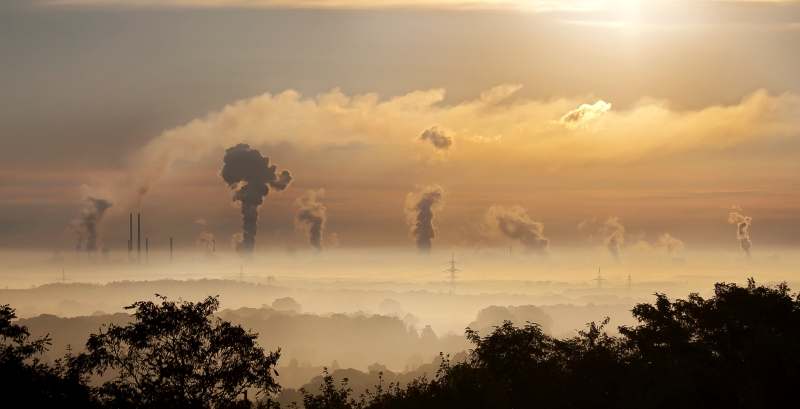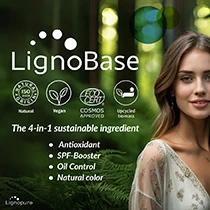Carbon capture and utilization tech maximizes cosmetics profits by monetizing waste

15 Feb 2022 --- Carbon capture and utilization (CCU) is an emerging technology set to transform how companies and governments pursue climate goals. Using CCU, manufacturers can prevent waste carbon from entering the atmosphere, using it to produce ingredients like ethanol. This can then be used to create products like perfume or cosmetics packaging.
In December, the European Council outlined plans to create a European CCU market. This means in the near future, companies may be offered greater economic or regulatory incentive to use captured carbon in manufacturing personal care ingredients.
One group that has been quick to jump on the opportunities of CCU is LanzaTech, a company specializing in gas fermentation technology.
Personal care ingredients through recycled carbon
Freya Burton, chief sustainability officer for LanzaTech, speaks to PersonalCareInsights about CCU’s potential to maximize profit derived from industrial operations by monetizing waste products. She further details how the company manufactures cosmetic ingredients using recycled carbon.
“LanzaTech uses a variety of waste gasses, including refinery, steel and ferroalloy emissions, as well as gasses derived from unsorted, unrecyclable municipal solid waste – for instance, household waste – and agricultural residues.”
 LanzaTech’s sister company, LanzaJet, has flown two commercial flights using environmentally sustainable aviation fuel.She explains that LanzaTech employs a process called gas fermentation that uses a “living, naturally occurring organism to ferment gasses to produce fuels, such as ethanol.” This ethanol is then used by LanzaTech’s partners such as Coty and L’Oréal to manufacture items including perfume and PET packaging.
LanzaTech’s sister company, LanzaJet, has flown two commercial flights using environmentally sustainable aviation fuel.She explains that LanzaTech employs a process called gas fermentation that uses a “living, naturally occurring organism to ferment gasses to produce fuels, such as ethanol.” This ethanol is then used by LanzaTech’s partners such as Coty and L’Oréal to manufacture items including perfume and PET packaging.
Burton informs that beyond ethanol, LanzaTech’s bacterial organism can make over 50 different chemicals, which LanzaTech is in the process of scaling. So far, the chemicals include acetone, isopropyl alcohol and octanol.
She notes that LanzaTech has a partnership with BASF to produce octanol through industrial emissions, and the company has plans to develop future products.
“For Coty, we use steel emissions to make ethanol,” Burton highlights.
“With our partners, we are looking to have products ranging from shampoo bottles with L’Oréal, running shoes with On shoes and more clothing ranges.”
Utilizing waste materials to increase profit sustainably
The company, founded in 2005, commercialized its CCU technology in 2018 with the launch of its inaugural commercial plant in China where it produces ethanol that can be used by the personal care industry.
LanzaTech later opened another commercial plant in China that makes ethanol through industrial emissions – which would otherwise enter the atmosphere.
LanzaTech has since begun production in Europe with seven additional plants in partnership with ArcelorMittal, a steel and mining company whose emissions provide carbon LanzaTech uses to manufacture its personal care product ingredients such as ethanol.
Burton says the ethanol created by LanzaTech – an upcycling innovation – is sustainable for the environment and chemically identical to traditionally-derived ethanol.
However, unlike in conventional ethanol production, Lanzatech uses waste residues as a feedstock, avoiding fossil resources and limiting the need for land and food crops in the manufacturing process.
LanzaTech’s CarbonSmart technology Researchers from the US National Academy of Sciences say countries and industry members must upscale renewable energy sources to get the most benefit from CCU.
Researchers from the US National Academy of Sciences say countries and industry members must upscale renewable energy sources to get the most benefit from CCU.
Using secondary technologies, LanzaTech’s CarbonSmart ethanol can be converted into other products such as ethylene oxide – used in surfactants – which the company used in partnership with Unilever to make laundry detergent and dish soap for sale in China, Germany and South Africa.
“We can also convert ethylene oxide to mono ethylene glycol, which is used to make PET. We have made packaging with Mibelle and Migros in Switzerland and with Dm in Germany, and we have also spun this into yarn to make fabric for clothing with Zara and Lululemon.”
Interestingly, Burton says LanzaTech also converts ethanol to “sustainable aviation fuel” (SAF) for aircrafts that is friendlier to the environment.
“We have developed this process, and our sister company, LanzaJet, is scaling this up,” she says. “We have already flown two commercial flights using a blend of SAF made from ethanol that came from steel mill emissions. ”
Seizing the benefits of CCU means upscaling renewable energy
In 2019, researchers from the US National Academy of Sciences released a study finding CCU technology has the potential to lead a carbon-neutral chemicals industry.
The researchers found that full implementation of CCU technologies would exceed “even the most ambitious scenarios for renewable energy deployment.”
Of course, extracting profit and minimizing climate impact with CCU isn’t so simple. The paper highlights that CCU requires a large amount of “low-carbon energy” to exploit its potential fully. It further questions whether companies and actors would be able to supply this energy reliably.
 The European Council says future regulations will benefit “first movers” within the carbon capture and utilization industry.“The actual implementation of renewable energy capacities is limited by practical constraints including costs, competition for land, public acceptance of energy infrastructure and limits in the uptake of intermittent electricity supply by the electricity grid,” say the researchers.
The European Council says future regulations will benefit “first movers” within the carbon capture and utilization industry.“The actual implementation of renewable energy capacities is limited by practical constraints including costs, competition for land, public acceptance of energy infrastructure and limits in the uptake of intermittent electricity supply by the electricity grid,” say the researchers.
As such, to extract the most profit from CCU in an environmentally sustainable fashion, society at large must increase its use of low-carbon, renewable energy exponentially.
The paper cautions that the industrial starting point from which the utilized carbon is emitted must also be de-fossilized to ensure a genuinely carbon-neutral industry.
However, if a standardized framework or infrastructure for CCU were put in place, it could reduce a country or region’s import dependency for fuel, thereby eliminating transport costs and avoiding global supply chain disruptions.
This would massively increase the energy security of any region or country that successfully implemented such a framework.
The European Council’s communication on sustainable carbon cycles
In the European Council’s December 2021 communication on sustainable carbon cycles, the Council outlines its aims to standardize CCU.
It includes references to prospective “CCU hubs” where interested CO2-emitters will “benefit from a common infrastructure and an open-access transport network for CO2 across national borders.”
The communication also highlights plans to create a “competitive” market for CCU and storage technologies and make recycled CO2 more traceable. The Council says that manufacturers who take up this CCU initiative will see favorable legislation in the future toward this end.
“Regulatory changes in the near future will further benefit first movers who deploy CCU technologies,” the European Council promises.
In May 2021, Netherlands-based biopolymer manufacturer, Avantium, secured US$2.1 million in grants from the European Union’s 2020 Horizon Program to develop its Volta Technology for producing carbon dioxide-based polymers.
By Olivia Nelson













